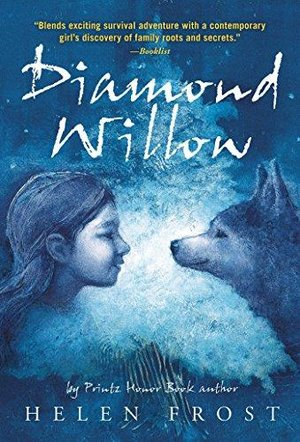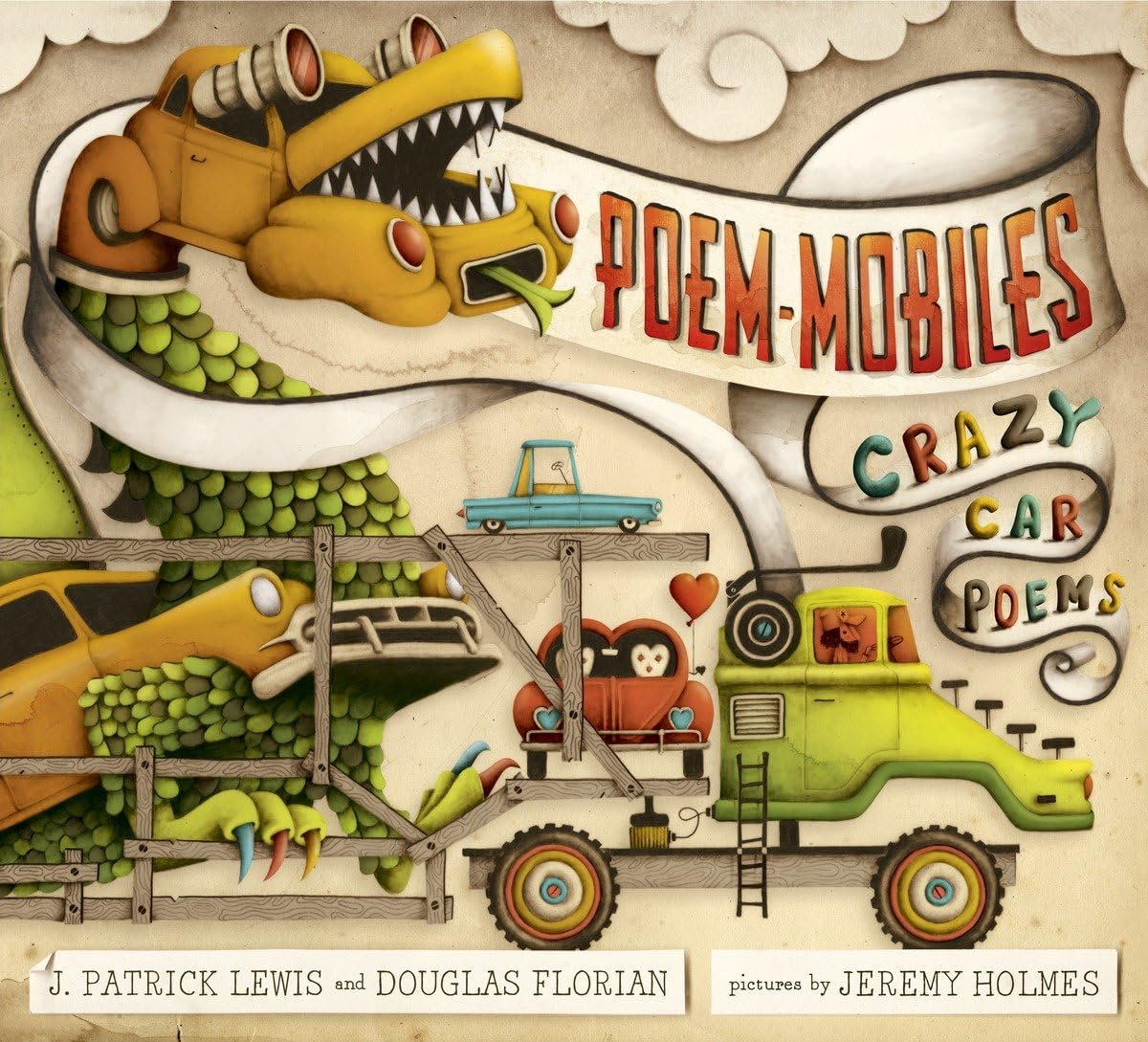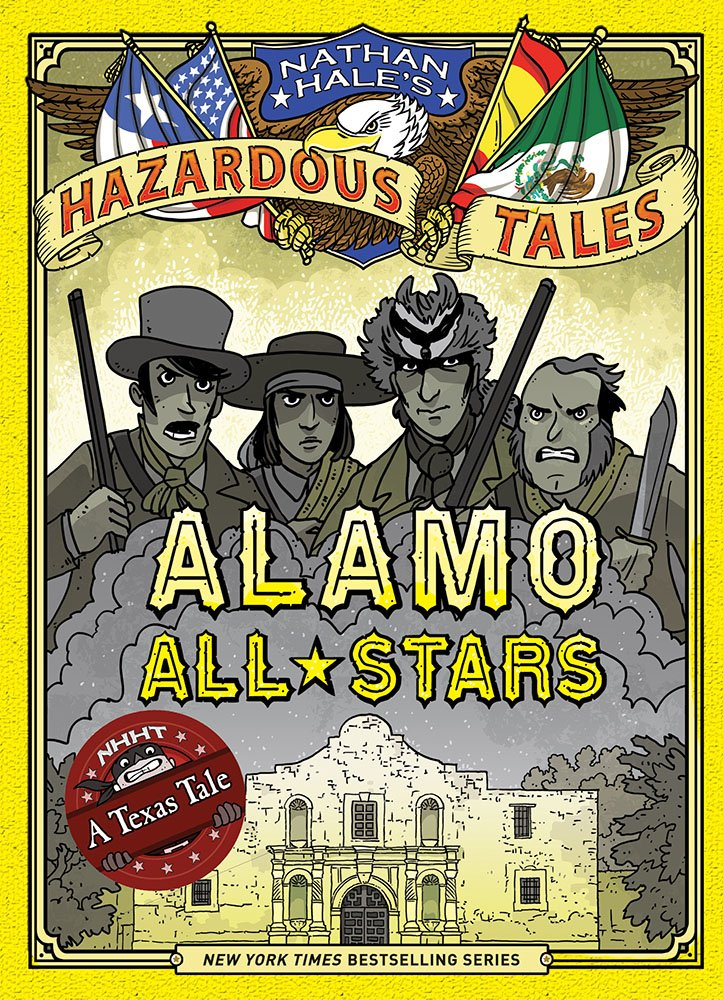Module 3: Poetry
Bibliography:
Salas, L. P., & Bisaillon, J. (2011). Bookspeak!: Poems about books. Clarion Books.
ISBN: 978-0547223001
Plot Summary: BookSpeak! Poems About Books is a collection of poems about books, written by Laura Purdie Salas and illustrated by Josee Bisaillon. The collection begins with a rhyming poem encouraging readers to put down their technology and dive into the world of reading, promising adventure and stories. Each page showcases a different type of poem, from acrostic to free verse and everything in between, that highlights the joys of reading and writing. One poem is told from the perspective of a character who is trapped in the book until a reader opens it up and discovers all the possibilities inside, while another poem describes the exciting cliffhangers that readers love in books. Every poem in this collection captures the unique and exciting experience of reading a book, all the while introducing readers to the wide variety that poetry can be presented in.
Critical Analysis: This book of poems takes the reader through all the stages of becoming immersed in a good story, from eagerly diving into a new book and urging the reader to take an adventure in reading, to arriving at the pictures in a book and learning how pictures are the "belle of the ball!" The collection is ore than just poems about books; the author organizes each poem in an intentional layout and order. While there are many types of genres that exist, this collection does an outstanding job of addressing multiple genres and writing from the perspective of many literary elements.
Each poem has a unique and engaging illustration that adds voice to the text. The illustrations are drawn in a patchwork or scrapbook style, thus lending to the idea that this is a book about books. The font is different for each poem, matching the style of prose, and each detail is specifically chosen to enhance the reading experience for each poem.
Awards and Recognition:
Notable Children's Books in the Language Arts Award, 2012
Review Excerpts:
From Horn Book Guide, Spring 2012: "In twenty-one clever, amusing, and spirited poems, books find their voices: an index beckons a reader to look up page numbers, a cover shouts out "Please stop! Take a look!", a library book compares being checked out to going on vacation. Buoyant mixed-media illustrations celebrate books as concrete objects while reinforcing their role as springboard for imagination."
From Publisher's Weekly, 2011: From the outset, this collection of poems makes its message clear: books are where it’s at. Salas’s polished verse demonstrates a deep love for all aspects of books, from their content to their creators...Bisaillon’s mixed media illustrations are dizzyingly inventive, their bright colors, sampling of typography, and whimsical details underscoring the idea of the potential that awaits between the covers.”
Connections:
- Students can choose an element of literature to inspire their creation of their own poem.
- Students can use scrapbook materials and recycled materials to create their own illustrations to accompany a poem.
- How to Write a Poem by Kwame Alexander
- Mirror, Mirror: A Book of Reverso Poems by Marilyn Singer
Sources:
BookSpeak! poems about books by Laura Purdie Salas. by Laura Purdie Salas. (2011, October 17). https://www.publishersweekly.com/978-0-547-22300-1
Salas, L. P., & Bisaillon, J. (2011). Bookspeak!: Poems about books. Clarion Books.
Bibliography:
Frost, H. (2008a). Diamond willow. Square Fish.
ISBN: 978-0312603830
Plot Summary: Diamond Willow is a novel in verse written by Helen Frost. It follows the story of a young girl named Diamond Willow, who lives in Alaska with her parents, younger sister Zanna, and team of sled dogs. One day, Willow is determined to bring her team of sled dogs, led by Roxy, to her grandparents' house on her own. However, she takes a blind turn too fast, resulting in Roxy damaging her eyes and potentially going blind. Willow struggles with the guilt over this accident, and in an effort to keep Roxy safe from being put to sleep, takes Roxy, her friend Kaylie, and another sled dog, Cora, back to her grandparents' house to save Roxy. The team gets lost along the way and have to endure the harsh winter conditions in the forest. However, they are not completely alone, as various forest animals they encounter are actually relatives of Willow and Kaylie, guiding them along the way. After their harrowing ordeal, Willow learns that she once had a twin sister named Diamond who died a few days after birth. The reader learns that Roxy is actually Diamond's spirit and that is why they have a special connection. Throughout the story, the Willow wonders how to be truly seen, and by the end of the story, she learns that there is more to her than meets the eye and there are friends and family who see her for who she really is.
Critical Analysis: This book takes the reader on an emotional coming-of-age journey, as the main character Willow learns about herself and her place in the world. The author includes an insightful author's note at the beginning of the story, which helps the reader understand about the Alaskan setting , the diamond-shape style of the poems, and the significance of the diamond willow. This is crucial for setting the scene of the story, as the reader understands the connection between the diamond willow revealing a diamond pattern underneath the surface and how the character of Willow learns how to dive deep and understand her true self under the surface. The symbolism is beautifully woven throughout the text, enhancing the message of learning to be oneself.
Each poem is written in a diamond shape, with bold words throughout each poem that reveal a hidden message, reflecting Willow's true feelings about the events in the story. Again, this symbolism reflects the nature of the diamond willow and brings an emotional impact to the reader. While the story shares an emotionally heavy topic, the author expertly crafts a stunning narrative that leaves the reader thinking about the connection of family and friendship.
Awards and Recognition:
Lee Bennett Hopkins Award, 2009
Review Excerpts:
From Kirkus Reviews, 2010: "Frost presents her story in a series of poems in Willow’s voice, using a form inspired by the marks on a diamond willow stick; roughly diamond-shaped and no two exactly alike, each contains a “hidden message” printed in boldface that spans several lines and encapsulates the poem. It’s a novel idea, and largely works quite well."
From School Library Journal, 2008: "Frost casts a subtle spell through innovative storytelling. Her poems offer pensive imagery and glimpses of character, and strong emotion. This complex and elegant novel will resonate with readers who savor powerful drama and multifaceted characters."
Connections:
- Students can learn more about the Jr. Iditarod by reading Dashing Through the Snow: The Story of the Jr. Iditarod by Sherry Shahan
- Students can read a fun story about sled dogs: Sled Dog School by Terry Lynn Johnson
- Students can research more about the origins of dog sledding
Sources:
Frost, H. (2008a). Diamond willow. Square Fish.
Frost, H. (2008, April 10). Diamond Willow. Kirkus Reviews. https://www.kirkusreviews.com/bookreviews/helen-frost/diamond-willow/
Bibliography:
Hoberman, M. A., & Fraser, B. (1998). The llama who had no pajama. Clarion Books.
ISBN: 978-0152055714
Plot Summary: The Llama Who Had No Pajama is a collection of one hundred favorite poems written by Mary Ann Hoberman, illustrated by Betty Fraser. Since the collection is of favorite poems throughout the years, there is a variety of topics covered in the book. Some of the topics included are birthdays, siblings, and animals. Some poems are contemplating childhood questions, such as the idea that coins are different sizes , with a nickel being bigger than a dime but is valued less. Many poems describe animals such as cockroaches, alligators, and mosquitos. Others are silly, humorous poems about Meg who likes eggs, or the llama who had no pajama (also the title of the collection).
Critical Analysis: This book has a variety of poems that do not share a specific topic or idea, however are still tied together by Hoberman's descriptive writing style. For example, the author captures the essence of a snowy day through the use of repetition when describing how snow is everywhere, as well as the excitement of lacing up your ice-skates when the winter season brings freezing temperatures. Along with descriptive poems, there are also many narrative poems, some that are realistic such as "Neighbors," simply about living next door to a best friend, and some that are far-fetched, such as "Timothy Toppin," who climbed a tree and didn't come down until he was seventy-four. The variety of poems included in this collection will appeal to young readers and middle readers, as there are some poems that younger readers will not understand yet, such as "Permutations," which uses almost exclusively homophones throughout its six stanzas.
The illustrations are unique to each poem, with some illustrations taking up the whole background of the page while others simply include a few drawings around the poem. The illustrations are straightforward and beautifully drawn, and many pages included soft colors that allow the words to have space to speak for themselves.
Awards and Recognition:
Poetry Foundation, Children's Poet Laureate 2008-2010
Review Excerpts:
From Horn Book Guide, 1998: "The poems--peppy verses immediately identifiable as Hoberman's by their use of alliteration and repeated words and lines--seem to cover every subject under the sun; all are dependably child-centered. Further bonuses are Fraser's delicate yet merry watercolors and the varied, imaginative page design."
From School Library Journal, 1998: "Hoberman's rhythms are lively and agile, and her imagination and sense of humor are still in tune with young readers. Fraser's simple but detailed gouache and watercolor illustrations exhibit the same qualities. The layout is masterfully varied and never overwhelms the poems."
Connections:
- Author study of Mary Ann Hoberman's books and poems, including:
- Miss Mary Mack
- Very Short Fairy Tales to Read Together
- The Eensy Weensy Spider
- Other Children's Poet Laureates:
- Jacqueline Woodson
- J. Patrick Lewis
- Jack Prelutsky
Sources:
Hoberman, M. A., & Fraser, B. (1998). The llama who had no pajama. Clarion Books.
Bibliography:
Lewis, J. P., Florian, D., & Holmes, J. (2014). Poem-mobiles: Crazy car poems. Dragonfly Books.
ISBN: 978-0375866906
Plot Summary: Poem-Mobiles: Crazy Car Poems is a collection of funny, engaging poems all about strange, unique cars based on everyday items or animals. The text starts with an introduction that explains how this book offers a look into what kinds of cars we may have in the future, setting the reader up to use their imagination and see the possibilities of what the world could look like. Each poem features a different look at a creative car, from "The Backwards Car" to the "Bathtub Car", which has "hot-water seating" and is "sudsy with bubbles." The poems describe the features of each imaginary car, using a simple rhythm accompanied by incredibly detailed illustrations that the reader will find themselves analyzing for hidden meanings.
Critical Analysis: This book is a fun look into where our imagination can take us, and young and old readers alike will enjoy the creative car ideas dreamed up by authors Lewis and Florian, brought to life by illustrator Holmes. The poems are relatively short and simple, with a rhyme pattern that creates a fun, sing-song rhythm. Each detail in the poem perfectly captures the topic that the author chose for each unique car, and the author fully commits to each "poem-mobile" throughout the collection.
The illustrations are very colorful, unique, and detailed. The reader may find themself spending more time on each page analyzing each detail the illustrator carefully included to bring a deeper meaning to the poem. The illustrations are cartoon-like and engaging.
Review Excerpts:
From Kirkus Reviews, 2013: "Lewis and Florian are both masters at creating lighthearted, fun-filled, breezy poems, and they do not disappoint in this joint venture. The text is placed as if on a stained and folded slip of paper, which is surrounded by Holmes' highly imaginative, bright and lively illustrations, rendered in pencil and watercolors with digital colors added. Endpapers are tire-tracked, and the contents page matches line drawings to the titles. Young readers will almost certainly be inspired to create their own wacky cars."
From Booklist, 2013: "The rhymes largely keep to such easy-to-follow quatrains paving the way for readers to enjoy Holmes’ hugely inventive pencil, watercolor, and digital art. These are deliriously overimagined auto designs, often Rube Goldberg-y or steampunky in feel, with a pale palette that gives the affair an old-fashioned sheen."
Connections:
- Readers can write their own imaginative car poem and then create a model car out of recycled materials
- Vroom! by Barbara McClintock
- Going Places by Paul A. Reynolds
Sources:
Lewis, J. P., Florian, D., & Holmes, J. (2014). Poem-mobiles: Crazy car poems. Dragonfly Books.






Comments
Post a Comment